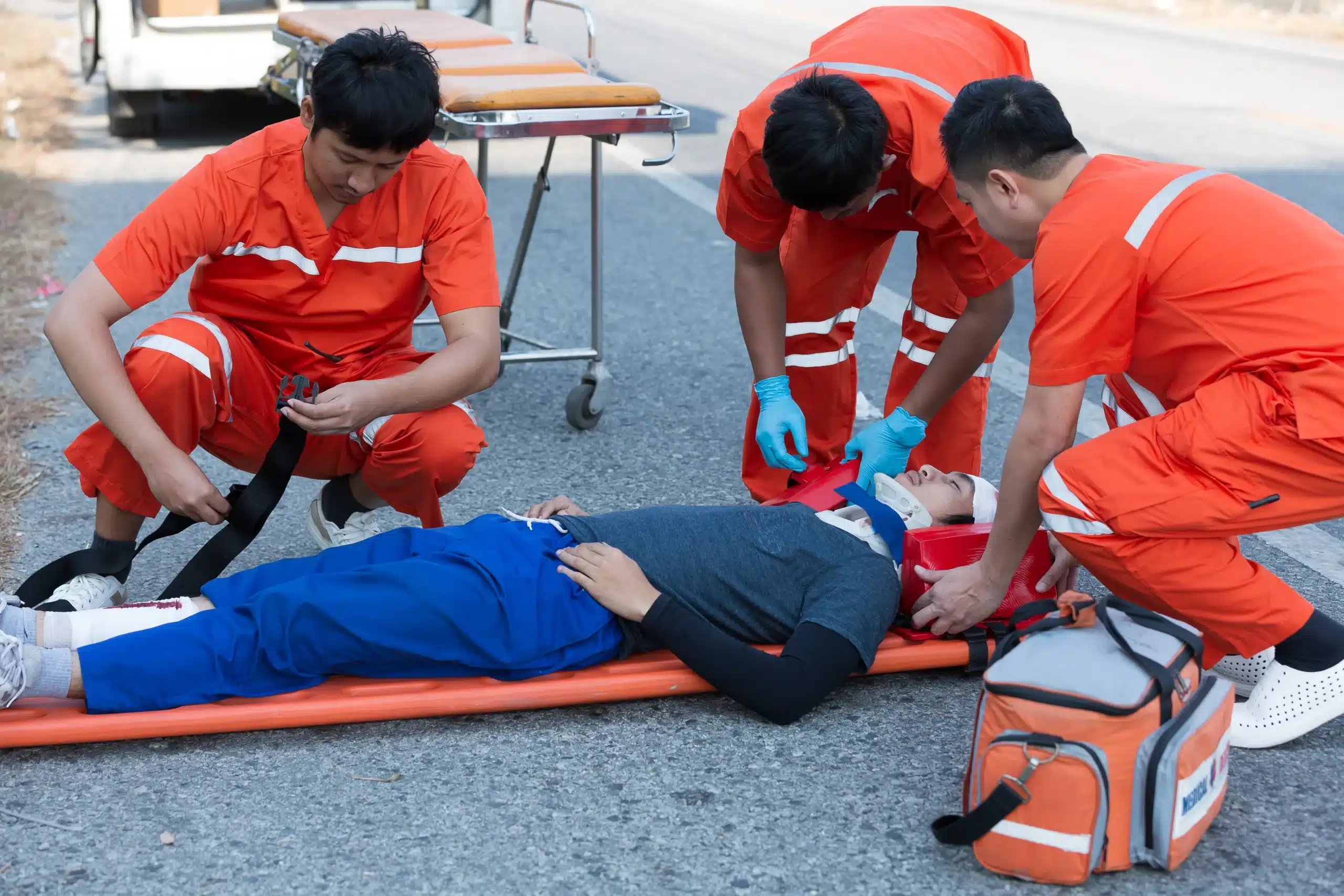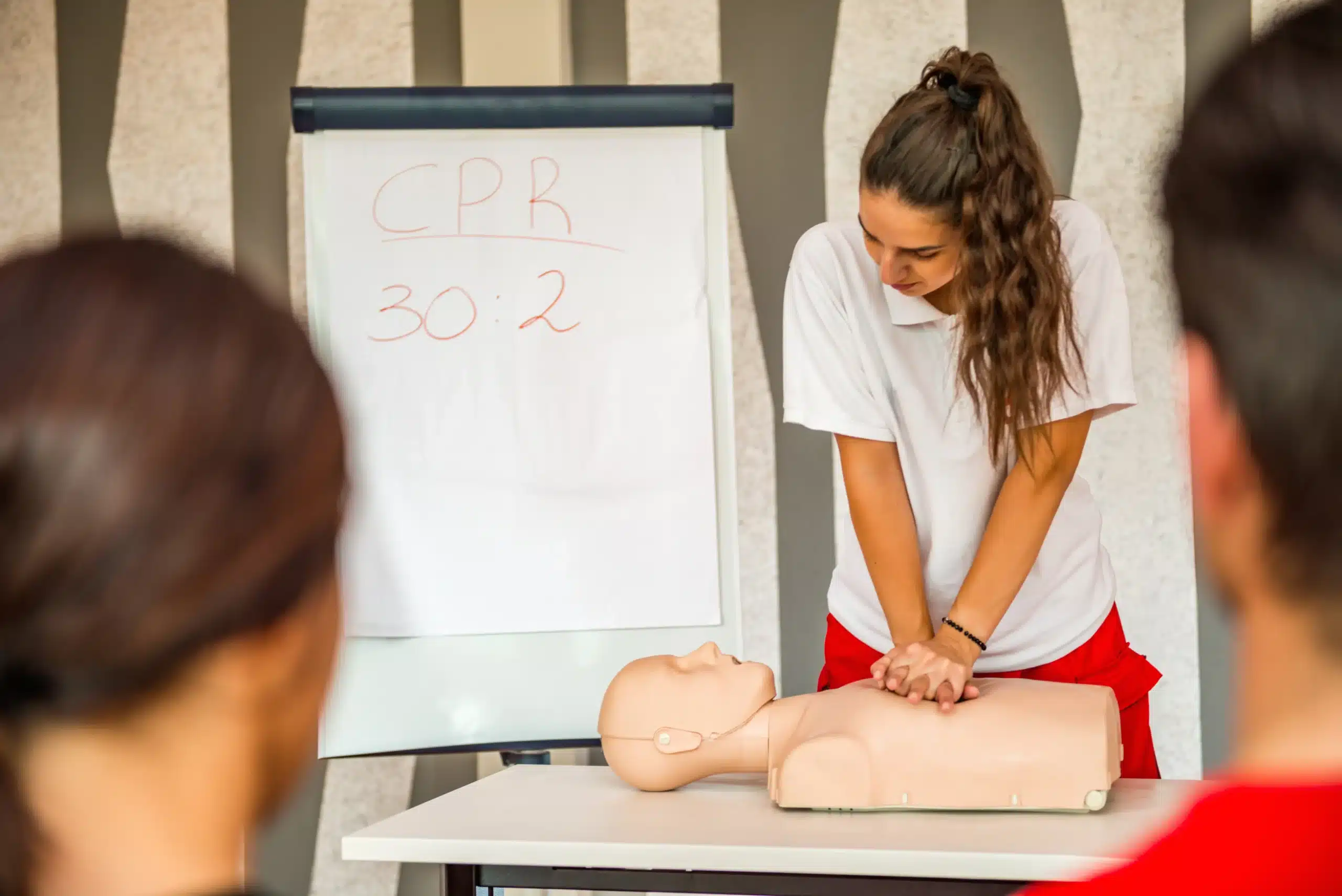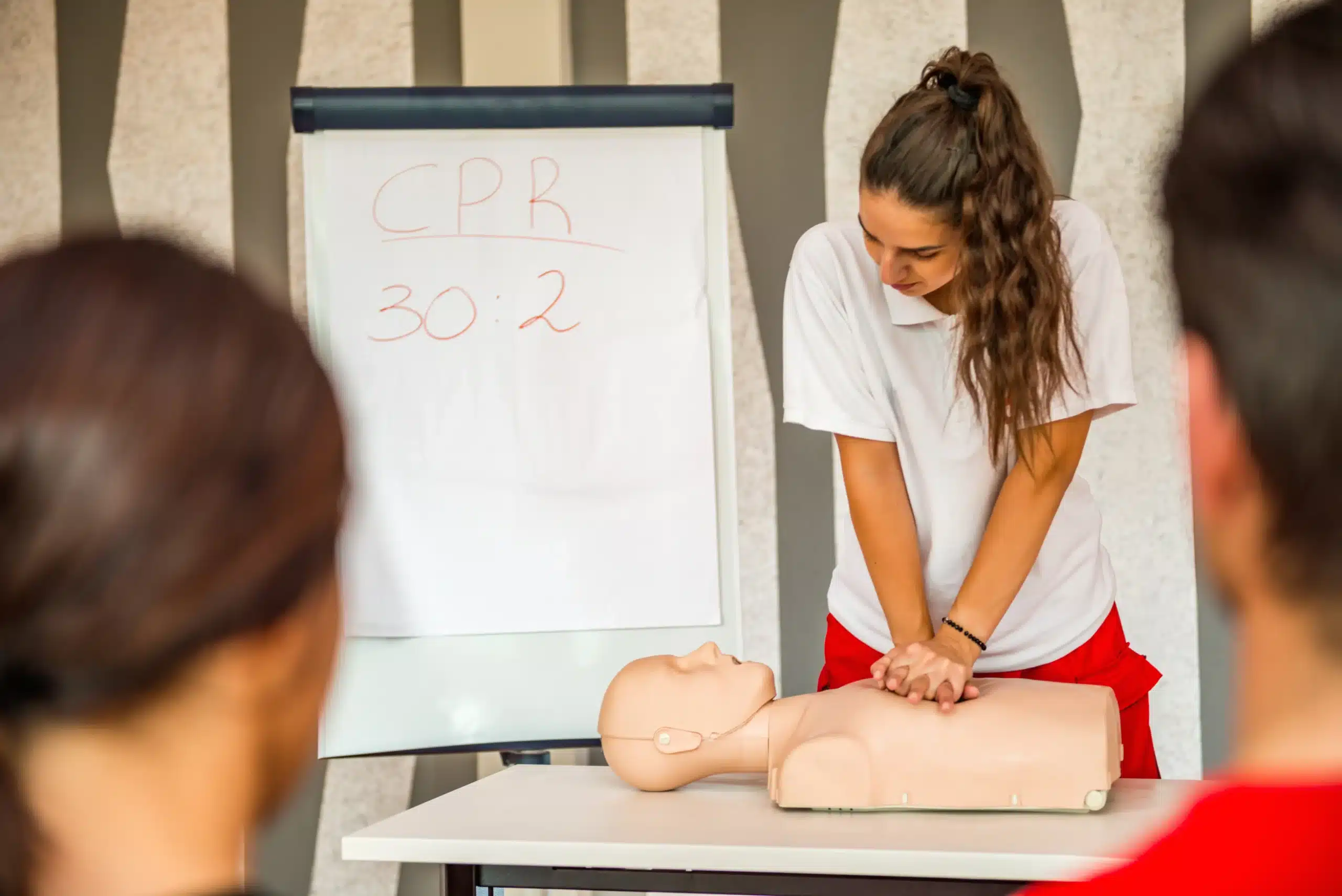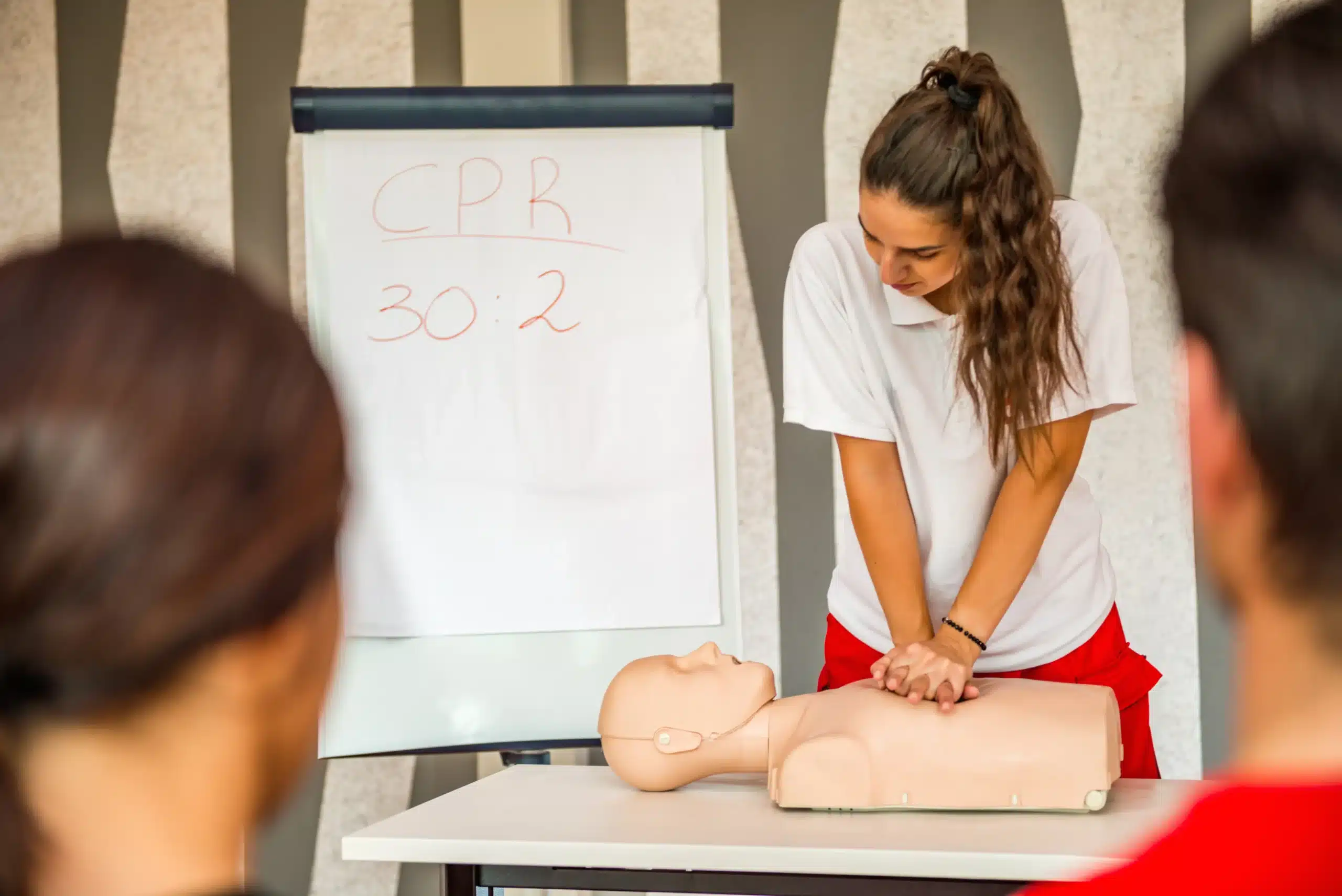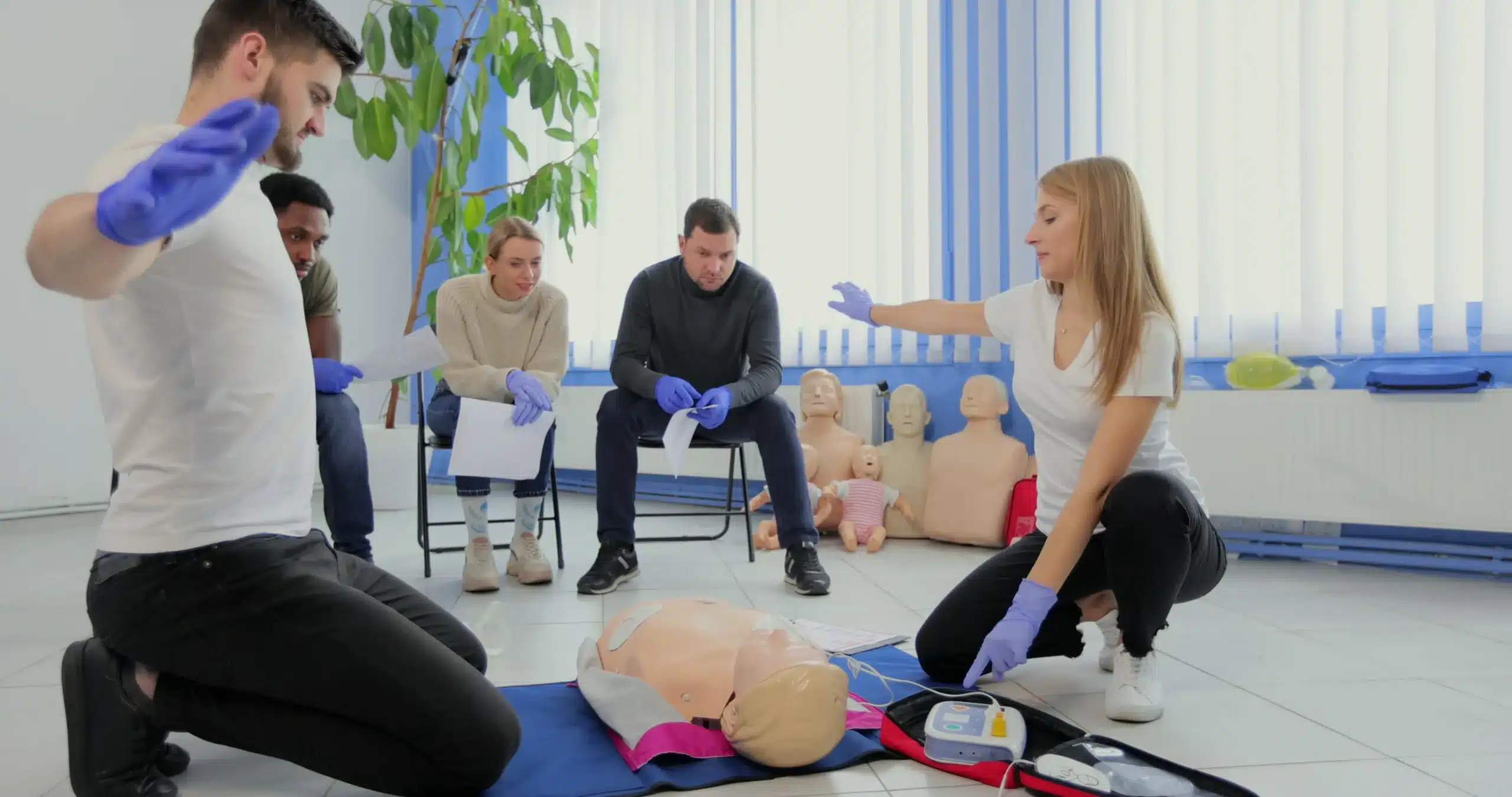Are you ready to empower others with life-saving skills? Becoming a basic life support instructor is a rewarding journey that allows you to make a tangible impact on your community. This post will guide you through every step of the process, from understanding the prerequisites and finding the right training program to navigating the certification process and exploring the various career opportunities available to BLS instructors. We’ll also delve into the essential skills needed to be an effective instructor, such as clear communication, adaptability, and the ability to provide constructive feedback. Let’s explore how you can become a confident and capable BLS instructor, equipped to make a real difference in the lives of others.
Key Takeaways
- Becoming a BLS instructor is an achievable goal: With the right training and dedication, you can gain the skills and knowledge to teach others these essential life-saving techniques.
- A BLS instructor certification opens doors to a variety of career paths: Whether you’re passionate about healthcare, community education, or corporate training, this certification offers flexibility and the chance to make a real impact.
- Continued learning is crucial for BLS instructors: Staying up-to-date with the latest guidelines ensures you provide high-quality training and empowers your students with the most effective life-saving skills.
What is a BLS Instructor?
A BLS (Basic Life Support) instructor equips people with life-saving skills. They teach adult, child, and infant CPR, how to use an AED (automated external defibrillator), and basic first aid. Think of them as the vital link between essential knowledge and the community. These instructors aren’t just experts in BLS techniques; they’re also skilled at communicating these procedures to diverse groups. BLS instructors create a supportive learning environment where students gain the confidence to respond effectively during emergencies. They guide students through practical exercises, provide feedback, and ensure everyone meets the required performance standards.
The role goes beyond simply demonstrating techniques; it’s about empowering others to act quickly and decisively when it matters most. A BLS instructor’s goal is to build a community of prepared individuals ready to assist in medical emergencies. They play a crucial role in strengthening the chain of survival, improving outcomes for those in need. BLS training is the foundation for responding to cardiac arrest and other life-threatening emergencies. It emphasizes the importance of immediate high-quality CPR, and instructors are key to delivering this training effectively. They help students understand the science behind BLS interventions and the importance of each step. This knowledge translates into confident action during real-life emergencies. A BLS instructor certification opens doors to various career paths. You can train others in essential life-saving skills within healthcare settings, educational institutions, community organizations, and more. Whether you’re a healthcare provider, a teacher, or simply someone who wants to make a difference, becoming a BLS instructor can be a rewarding experience.
BLS Instructor Requirements
Becoming a Basic Life Support (BLS) instructor involves a few key requirements. Let’s break them down step by step so you know what to expect.
Current BLS Certification
First, you’ll need a current BLS Provider certification from a recognized organization like the American Heart Association (AHA) or the American Red Cross. This ensures you have the most up-to-date knowledge and skills in basic life support techniques. Think of it as the foundation upon which you’ll build your instructor expertise. Many organizations offer BLS provider courses, including Concord CPR Classes.
Teaching Experience or Aptitude
While prior teaching experience can be helpful, it isn’t strictly required to become a BLS instructor. What is essential is an aptitude for teaching and a willingness to learn effective instruction methods. You’ll develop these techniques through a BLS instructor training course, which will prepare you to deliver engaging and informative BLS classes. Part of this training often involves teaching a monitored class, giving you the chance to put your new skills into practice under the guidance of an experienced instructor.
Age and Education
You might be wondering about specific age or educational requirements. The good news is that there aren’t strict prerequisites in these areas. While many CPR instructors have a background in healthcare, it’s not mandatory. What matters most is your commitment to learning and your ability to effectively teach BLS skills to others. Whether you’re a seasoned healthcare professional or just starting out, you can become a certified BLS instructor.
Where to Find BLS Instructor Courses
Ready to become a BLS Instructor? Several respected organizations offer comprehensive instructor training programs. Here are a few of the most recognized options:
American Heart Association (AHA)
The AHA offers the BLS Instructor Essentials Course, preparing you to teach AHA-led BLS Provider courses (both in-person and blended learning). The course covers using AHA teaching materials, building your coaching skills, and developing effective evaluation techniques. This ensures your future students meet the required learning objectives.
American Red Cross (ARC)
The American Red Cross offers the BLS for Healthcare Providers Instructor course. This program is essential for healthcare professionals like nurses and EMS personnel. It includes training on single and multiple-responder CPR and AED use, preparing instructors to teach these critical skills.
National Safety Council (NSC)
The National Safety Council offers a BLS Instructor Essentials course covering core basic life support concepts. This program equips individuals with the knowledge and confidence to handle emergencies and teach others to do the same.
Emergency Care & Safety Institute (ECSI)
The Emergency Care & Safety Institute offers various courses, including BLS Instructor training. Their programs focus on providing individuals with the skills to respond effectively in emergencies.
ProTrainings
ProTrainings offers online and blended learning courses for BLS Instructor certification. They focus on practical skills and knowledge application, preparing instructors to teach essential life-saving techniques.
How to Become a BLS Instructor
Becoming a BLS Instructor is a rewarding way to share life-saving skills. Here’s a step-by-step guide to help you through the process:
Get BLS Provider Certified
First, you’ll need your BLS Provider certification. This covers core life support skills, such as CPR, using an AED, and relieving choking. Make sure your certification is from a recognized organization like the American Heart Association (AHA) or the American Red Cross. This ensures your training meets established standards. A current provider card is a prerequisite for instructor-level training.
Complete the Instructor Essentials Course
Once you’re a certified BLS Provider, the next step is the BLS Instructor Essentials course. This course prepares you to teach BLS classes effectively, covering lesson planning, classroom management, and clear presentation of information. The AHA offers this course online, allowing you to learn at your own pace. You’ll receive a certificate of completion when you finish.
Take the Instructor Course
After the essentials course, you’ll take the BLS Instructor course. This hands-on course dives deeper into teaching methodologies and provides opportunities to practice your skills. You’ll learn how to conduct demonstrations, give feedback to students, and adapt your teaching to different learning needs. This course typically involves in-person training with an experienced instructor-trainer.
Teach a Monitored Class
The final step involves teaching a BLS class under the supervision of a certified instructor-trainer. This allows them to assess your teaching abilities and provide feedback. They’ll observe your presentation skills, student interaction, and your ability to convey the course material effectively. Once you successfully complete this monitored teaching experience, you’ll earn your BLS Instructor certification.
Costs and Investments
Becoming a Basic Life Support (BLS) instructor involves several financial commitments. It’s helpful to understand these upfront so you can plan accordingly. Let’s break down the typical costs associated with becoming and staying a BLS instructor.
Course Fees
The initial investment to become a BLS instructor typically ranges from $360 to $935. This usually covers the BLS provider course (a prerequisite), the BLS instructor essentials course, and the hands-on instructor course. Remember, these costs can vary depending on your location and the training center or instructor you choose. It’s always a good idea to compare pricing from different providers before committing to a program. Vitali Partners offers a helpful guide outlining these costs.
Materials and Equipment
Beyond the course fees, factor in the cost of materials and equipment. While some courses provide materials, others may require you to purchase them separately. If you opt for an online instructor course, you might need to invest in equipment like training manikins and AED trainers to facilitate your teaching. The American Heart Association (AHA) offers supplemental materials like face shields, manikin wipes, and training valves—all essential for creating a safe and effective learning environment.
Renewal and Continuing Education
Maintaining your BLS instructor certification is an ongoing process. The AHA requires instructors to renew their certification every two years through a recertification process. This involves completing a recertification course and staying updated on the latest BLS guidelines and practices. Staying current ensures you’re providing high-quality training. The AHA BLS Instructor Manual details the renewal requirements. Understanding the potential challenges associated with recertification can also help you prepare.
Essential Skills for BLS Instructors
Becoming a certified BLS Instructor involves more than just knowing the material; it requires a specific skill set to effectively teach and mentor others. Here are some essential skills for BLS instructors:
Communicate Effectively
Clear communication is paramount for a BLS instructor. You’ll need to explain complex medical concepts in a way that’s easy for students to grasp. This involves not only delivering information clearly but also actively listening to student questions and concerns. Training programs thrive when instructors foster open communication, creating a comfortable learning environment where students can ask questions and receive helpful feedback. This back-and-forth dialogue is crucial for addressing individual learning styles and ensuring everyone understands the material. The ability to communicate effectively is a cornerstone of successful BLS instruction.
Adapt and Be Patient
Every student learns at their own pace and has a unique learning style. A skilled BLS instructor can adapt their teaching methods to accommodate these differences. Patience is key, especially when working with students who may be struggling with certain concepts or skills. Instructors should incorporate ample practice time and create tailored educational strategies. Encouraging teamwork during training sessions can also enhance communication skills and promote a seamless approach to BLS in real-life scenarios. Being able to adapt your teaching style and demonstrating patience are essential qualities for effective BLS instruction.
Coach and Give Feedback
Constructive feedback is essential for student growth. As a BLS instructor, you’ll need to provide specific and actionable feedback to help students improve their skills. This involves observing their performance, identifying areas for improvement, and offering guidance on how to refine their techniques. Effective feedback and remediation techniques are crucial for helping students master the skills necessary to perform BLS effectively. The AHA’s BLS Instructor Essentials course offers valuable training on providing effective feedback.
Debrief Effectively
Debriefing after practice scenarios is a valuable learning opportunity. It allows students to reflect on their performance, discuss what went well, and identify areas where they could improve. A skilled BLS instructor can guide these debriefing sessions, ensuring they are structured, productive, and focused on key learning points. The AHA BLS Instructor Manual offers further insights into developing effective debriefing skills. This resource provides valuable insights into effective debriefing strategies.
BLS Instructor Career Opportunities and Benefits
Becoming a BLS Instructor opens up a world of opportunities to share life-saving skills. It’s a rewarding path, both personally and professionally. Let’s explore some of the career paths and benefits you can expect.
Teach in Healthcare Facilities
Hospitals, clinics, and other healthcare facilities constantly need qualified BLS Instructors to train their staff. As a BLS Instructor, you’d play a vital role in ensuring healthcare providers have up-to-date skills to respond to emergencies effectively. This setting offers a chance to work alongside other medical professionals and contribute directly to patient care. You can learn more about the importance of BLS training for healthcare professionals.
Lead Community Education Programs
Sharing your expertise with the wider community is another fulfilling avenue. You can design and lead BLS training programs for various groups, such as schools, community centers, and non-profit organizations. Empowering people with these essential skills can make a real difference in their lives and the safety of their communities.
Provide Corporate Training
Many businesses, especially those with health and safety requirements, seek out BLS Instructors to train their employees. Offering corporate training can be a great way to build a client base and create a flexible schedule. You can tailor your courses to the specific needs of each company, providing valuable training that enhances workplace safety.
Enjoy Flexible Work Options
One of the perks of becoming a BLS Instructor is the flexibility it offers. You can choose to work full-time or part-time, set your own hours, and even work remotely. This career path is ideal for those seeking a better work-life balance or looking to supplement their existing income. Plus, the ability to communicate effectively with students and provide feedback, allows for dynamic and adaptable teaching styles. You can find more information on becoming a BLS Instructor and the various career paths available in this comprehensive guide.
Maintain Your BLS Instructor Certification
Once you become a BLS Instructor, staying current with the latest guidelines and techniques is essential. This not only ensures you’re providing the best possible training but also maintains your instructor status. Let’s explore how to keep your certification active and your skills sharp.
Renewal Requirements
The American Heart Association (AHA) requires instructors to renew their BLS Instructor certification every two years. This process typically involves completing a recertification course, which covers any updates to BLS guidelines and procedures. Staying on top of these renewal requirements is key to maintaining your instructor credentials. Check with your certifying organization for specific renewal policies and deadlines.
Continuing Education Options
Beyond the mandatory renewal process, continuing education is invaluable for BLS Instructors. Think of it as a way to refine your teaching skills and deepen your understanding of life-saving techniques. There are several ways to pursue continuing education:
-
BLS Renewal Courses: These courses offer a refresher on core BLS skills and introduce any new guidelines or protocols. They’re a great way to prepare for your recertification and stay up-to-date with the latest best practices. Many organizations, including the AHA, offer these renewal courses. Participating in these courses can also fulfill some of the continuing education requirements for your instructor certification.
-
Advanced Certifications: While not strictly required for BLS instruction, pursuing advanced certifications like ACLS or PALS can broaden your skillset and enhance your credibility as an instructor. These certifications delve deeper into life-saving procedures and can provide valuable insights to share with your students. Concord CPR Classes offers both ACLS and PALS certification courses. Consider adding these to your repertoire to expand your teaching opportunities.
-
Workshops and Seminars: Look for workshops and seminars focused on specific aspects of BLS instruction, such as effective teaching methods or managing emergency scenarios. These can provide valuable tools and techniques to improve your instruction and better prepare your students. Check with your certifying organization or local training centers for upcoming workshops and seminars.
By actively participating in continuing education opportunities, you not only maintain your BLS Instructor certification but also demonstrate a commitment to providing high-quality training. This dedication benefits both you and your students, ensuring everyone is equipped with the most current and effective life-saving skills.
Common Misconceptions About BLS Instructors
There are several misconceptions surrounding BLS instructors and the training they provide. Let’s clear up a few common misunderstandings.
It’s Only for Healthcare Professionals
Some people believe BLS training and certification are only for healthcare professionals like doctors and nurses. This isn’t true. BLS certification equips anyone with life-saving skills, including using automated external defibrillators (AEDs), basic airway management, and techniques for assisting someone who is choking. These skills are valuable for everyone, from teachers and coaches to parents and childcare providers. At Concord CPR Classes, we welcome anyone interested in learning these essential skills. Sign up for a class today.
The Training Takes Too Long
Another misconception is that BLS certification requires a huge time commitment. While it does require dedicated study and practice, the training is designed to be efficient and manageable. BLS certification courses can often be completed in a single day or over a weekend. Check out our course schedule to see how easily BLS training can fit into your life.
Extensive Experience is Required
You don’t need years of medical experience to become a BLS instructor. The focus is on mastering the skills and knowledge required to teach the BLS curriculum effectively. Comprehensive instructor training programs provide the tools and resources you need to become a confident and capable instructor. Our experienced team at Concord CPR Classes supports aspiring instructors through every step.
Certification is Expensive
Cost can be a concern, but BLS certification is more affordable than you might think. The long-term benefits of having these life-saving skills far outweigh the initial investment. Concord CPR Classes offers a low price guarantee and group discounts to make training accessible.
No Further Training Is Needed
BLS is not a “one and done” deal. Maintaining your certification requires ongoing education and recertification to stay current with the latest guidelines and techniques. This ensures you’re always equipped to provide the most effective care. Recertification courses are readily available and often shorter than the initial certification course. We offer convenient RQI classes for healthcare professionals seeking a streamlined recertification process.
Resources for New BLS Instructors
Starting your journey as a BLS Instructor can feel like a big undertaking, but plenty of resources are available to help you succeed. Here are a few key resources to utilize:
Instructor Manuals and Course Materials
The American Heart Association’s BLS Instructor Manual is your go-to guide for delivering effective Basic Life Support training. It provides comprehensive information, covering everything from core concepts to practical teaching techniques, skills practice sessions, and addressing common challenges new instructors face. A thorough understanding of this manual will make you a more confident and effective instructor.
Online Training and Webinars
Online resources offer valuable support for BLS Instructors. The BLS Instructor Essentials Online course, a self-directed program, is part of the blended learning approach. This course focuses on effectively using AHA Instructor materials, ensuring students achieve learning objectives, and adhering to AHA Instructor and course policies. These online resources can supplement in-person training and provide ongoing support as you develop your teaching skills.
Peer Support and Networking
Connecting with other BLS Instructors creates a valuable support system. Many instructors find that sharing experiences and solutions to common challenges is incredibly helpful. Common questions fielded by the AHA often lead to the formation of these supportive communities. Consider joining online forums or local instructor networks to tap into the collective wisdom of experienced instructors.
Feedback and Evaluation Tools
Gathering feedback is crucial for continuous improvement as an instructor. Using evaluation tools and encouraging open communication with your students helps you identify areas of strength and areas where you can refine your teaching methods. Effective training programs prioritize two-way communication, allowing for feedback on performance and opportunities to adjust and improve skills.
Continuing Education Opportunities
Staying up-to-date with the latest guidelines and techniques in emergency medical care is essential for any BLS Instructor. Continuing education courses and regular recertification ensure your skills remain sharp and you’re prepared to deliver the highest quality training. The importance of regular training for healthcare professionals can’t be overstated. This commitment to ongoing learning demonstrates your dedication to providing effective, up-to-date instruction.
Related Articles
- Basic Life Support Instructor Course: Everything You Need to Know – Concord CPR Classes
- BLS Training Near Me: A Practical Guide – Concord CPR Classes
- How to Become an ACLS Instructor: Your Comprehensive Guide – Concord CPR Classes
- ACLS Instructor Certification: A Complete Guide – Concord CPR Classes
- BLS Certification in Concord: Your Complete Guide – Concord CPR Classes
Frequently Asked Questions
What’s the difference between a BLS provider and a BLS instructor?
A BLS provider is someone trained in basic life support skills, while a BLS instructor teaches those skills to others. Instructors have completed additional training and certification to become effective educators. They guide students through the process of learning CPR, AED use, and other essential life-saving techniques.
I’m not a healthcare professional. Can I still become a BLS instructor?
Absolutely! A background in healthcare isn’t required to become a BLS instructor. The most important qualities are a desire to teach and a willingness to learn effective instruction methods. The BLS instructor training program will equip you with the necessary tools and techniques, regardless of your professional background.
How long does it take to become a BLS instructor?
The timeframe depends on the specific program and your prior experience. You’ll first need to be BLS provider certified. After that, the instructor training process, including the essentials course, the instructor course, and the monitored teaching experience, can typically be completed within a few weeks to a couple of months.
What are the ongoing costs associated with being a BLS instructor?
Besides the initial certification fees, there are costs associated with maintaining your instructor status. These include renewal fees every two years and potential costs for continuing education courses, materials, and equipment.
Where can I find BLS instructor courses near me?
Several organizations offer BLS instructor training, including the American Heart Association, the American Red Cross, and the National Safety Council. You can also find training centers offering these courses by searching online or checking with local hospitals and community organizations. Concord CPR Classes is a great place to start your search, as they offer various CPR and BLS courses, and may be able to direct you to local instructor training options.



